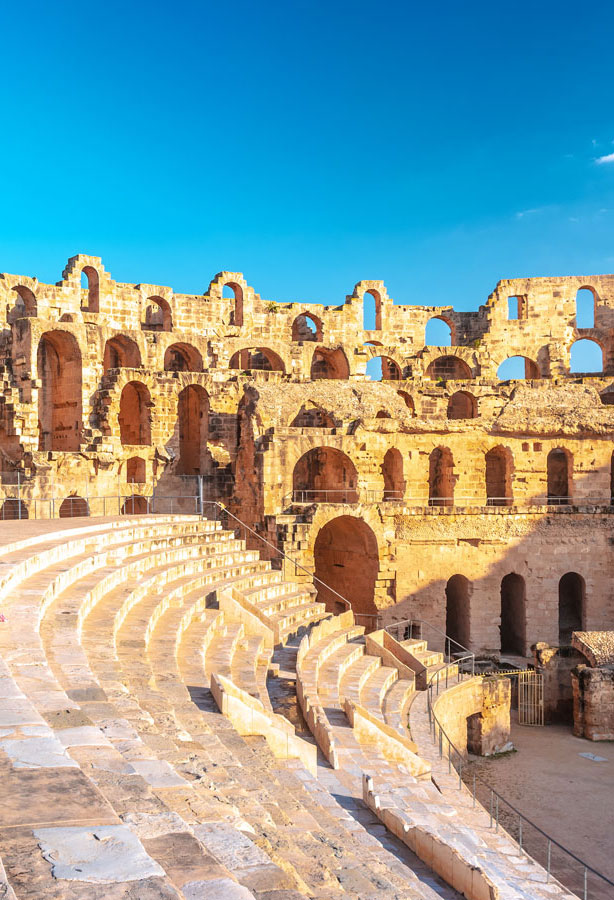At its peak in 117 CE, the Roman Empire had spread far beyond what is now Italy. Its reach extended over 2 million square miles, from northern Britain, around the entire Mediterranean Sea, and into southern Egypt. Fast forward to the 21st century, and many of the buildings and structures that the Romans erected have remarkably survived, though some are little more than ruins. If you’re interested in seeing them for yourself, here are seven stellar examples of ancient Roman architecture located outside of Italy.
Hadrian’s Wall – England
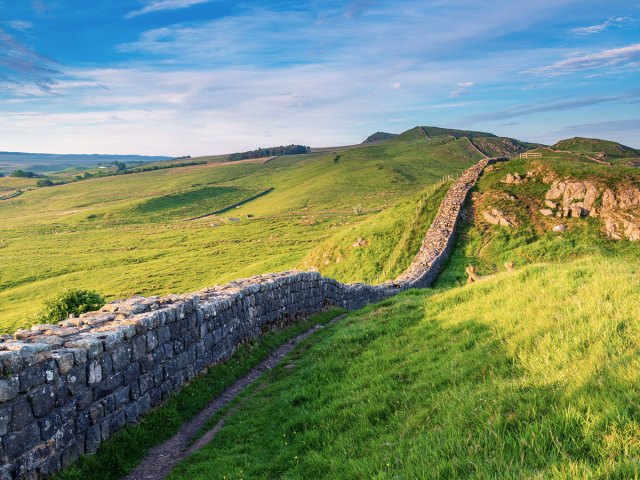
The longest surviving fortification from the Roman Empire, Hadrian’s Wall stretches across northern England, from Bowness-on-Solway in Cumbria to Wallsend on the River Tyne. In 122 CE, during a visit to the province of Britannia on the northern edge of the Roman Empire, Emperor Hadrian ordered his army to build a wall to keep the Barbarians out. The 73-mile-long fortification took about six years to complete. Its design incorporated a string of forts and milecastles, which enabled the soldiers to fend off any attempted incursions.
When Emperor Hadrian died, his successor Antoninus Pius decided to build the Antonine Wall in 142 CE about 20 miles north of Hadrian’s Wall. But this replacement used turf rather than stone and proved less effective, so it was abandoned in favor of Hadrian’s Wall. Over the centuries, the structure was plundered for its stone, but since the 19th century it has been protected and preserved, and is now part of a UNESCO World Heritage Site.
Pont du Gard – France
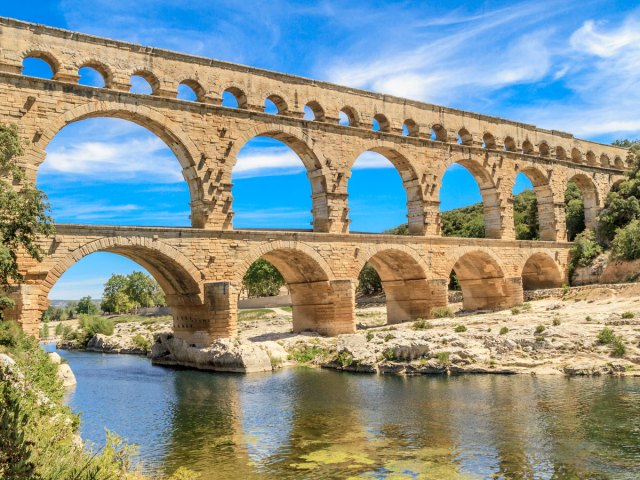
Located in the Occitanie region of southern France, the Pont du Gard is the world’s tallest Roman aqueduct bridge standing today. The historic aqueduct once supplied the city of Nîmes, then the Roman colony of Nemausus, with its water in the first century CE. Built from limestone, it stands around 160 feet tall and would typically have carried about 11 million gallons of water each day. The Pont du Gard took a team of around a thousand builders five years to construct.
After the fall of the Roman Empire, it was repurposed as an early example of a toll bridge. Now, almost 2,000 years later, an immersive museum explains how it was constructed and why it was so impressive. Guided tours run several days a week, enabling visitors to step inside the third tier of the structure.
Amphitheater at El Djem – Tunisia
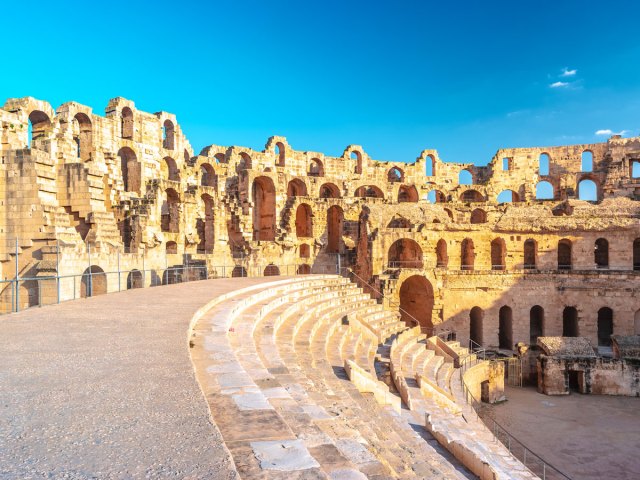
Construction on the Roman amphitheater at El Djem (sometimes spelled El Jem) began in 238 CE. It was a tumultuous time in what was then Thysdrus (now a town in northeastern Tunisia). That year, the local population staged a spirited, yet ultimately unsuccessful revolt. Nevertheless, this spectacular landmark — boasting three still-accessible tiers of arcades, as well as a labyrinth of underground rooms and passages — is a testament to the effort the Romans made in providing arenas for spectator events.
When it was finished, the amphitheater accommodated a crowd of approximately 35,000 people. Historians believe that this makes it the third-largest surviving amphitheater, after the Colosseum in Rome and that of Capua, home to the empire’s first gladiator school. Given that the structure has no foundations and is freestanding, it’s particularly noteworthy that it still stands.
Porta Nigra – Germany
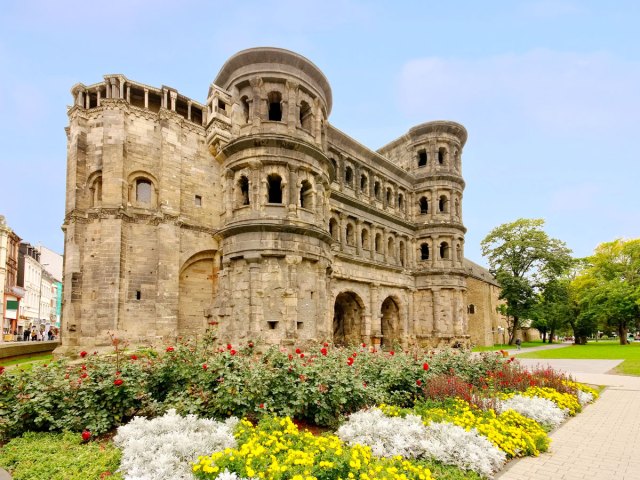
The Porta Nigra is a remarkably intact Roman gate that stands in the heart of Trier, which is the oldest city in Germany. Construction began in 170 CE, and originally it was one of a quartet of gates. There’s no record of what the Romans themselves called it, but it has been known as the Porta Nigra for at least 900 years. The name of the sandstone structure is Latin for “Black Gate,” most likely a nod to the dirt it acquired during its lifetime.
For a period, the Porta Nigra was rebuilt and used as a burial place in the 11th century and later converted into a church, but it was returned to its original state on Napoleon’s orders in the early 19th century. Visitors today can admire the gate’s intricate stonework and the iron clamps that held it together.
Cardo Maximus – Jordan

The Cardo Maximus was the main north-south street found in many ancient Roman cities and military forts. The one in Jerash — formerly the settlement of Gerasa and considered one of the best-preserved examples of a Roman provincial town — stretches about half a mile between the city’s North Gate and Oval Plaza.
This Roman road is an impressive feat of engineering in its own right. Despite being constructed in the first century CE, skilled civil engineers knew to include manholes to facilitate underground drainage, and, if the cart ruts are anything to go by, constructed their roads to cope with busy traffic. Back then, around 500 colonnades would have lined the paved street, their heights varying according to the buildings that stood behind them. Some of them remain upright today and were reconstructed in the 20th century.
Diocletian’s Palace – Croatia
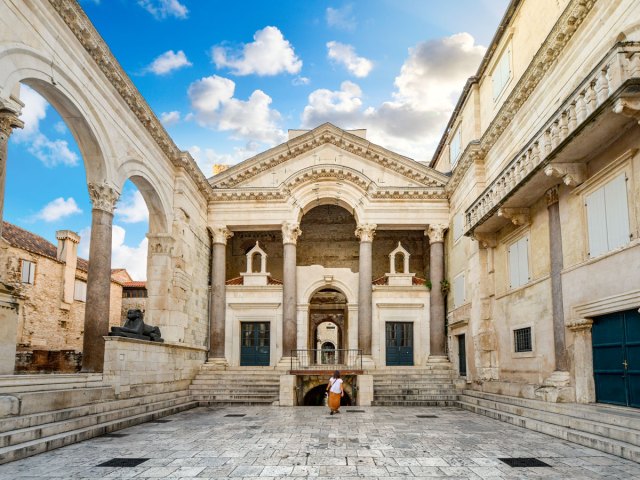
When he abdicated in 305 CE, Emperor Diocletian did so in style, retiring to a house that was part luxurious villa and part Roman military camp. Today, his sprawling palace dominates the historic core of the Croatian city of Split and draws thousands of tourists every year.
The palace, built of limestone and white marble, was as secure as a fortress — the walls that face the Adriatic Sea measure up to seven feet thick and 72 feet high. The complex once boasted 16 towers (three survive) and four gates. There was ample space to house guards and servants, as well as store a large quantity of provisions. But as well as being practical it was also fittingly magnificent, with breathtaking views out over the water and a grand gallery to display works of art.
Temple of Diana – Spain
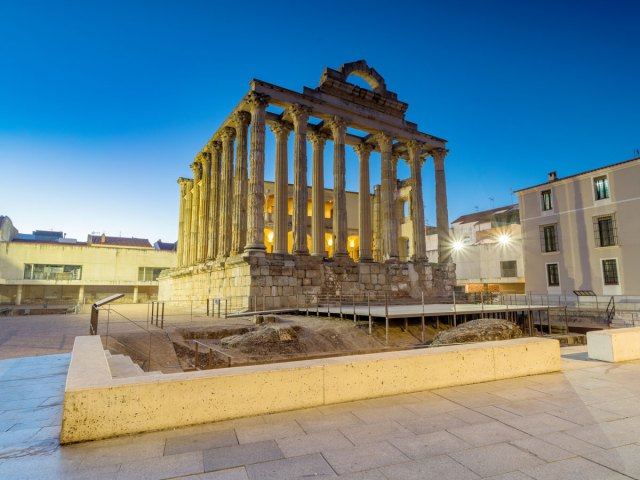
The Temple of Diana stands on a substantial stone pedestal in the city of Mérida, the capital of western Spain’s Extremadura region. Six granite Corinthian columns front this hexagonal structure, which was erected during the first century CE when Mérida was the Roman settlement of Emerita Augusta.
Today, it is little more than a skeleton of its former self, though it’s surely an eye-catching and intriguing one. Behind, visitors will see the palace of the Duke of Corbos, built in the 16th century. Surrounding the Temple of Diana on the other three sides are modern shops, offices, and houses — whose ordinariness only serves to highlight the sacred significance of the temple. It’s not the only ancient architecture to survive in Mérida, either. Take a stroll and you’ll soon come across a Roman theater, amphitheater, Trajan arch, hippodrome, and aqueduct.
More from our network
Daily Passport is part of Inbox Studio, which publishes content that uplifts, informs, and inspires.






